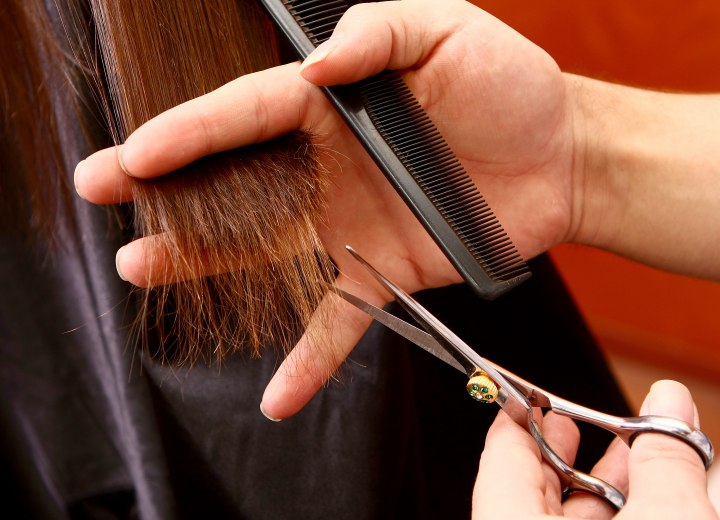Z-Cut Layering

A: Z-cut layering is not a widely recognized or standardized term in the hairdressing industry. What your former stylist was likely referring to is a specialized variation of point cutting, which is a texturizing technique that many professionals use but may describe using their own terminology.
This technique is particularly effective for hair like yours that's thick, coarse, and unruly, especially if it has natural wave or curl patterns. The angled cutting motion helps to break up the bulk of the hair in a way that looks completely natural while adding incredible texture and definition. Rather than creating blunt, heavy layers that can make thick hair look even bulkier, the Z-cut technique removes weight strategically while maintaining the hair's natural movement and bounce.
The zigzag effect created by this cutting method works by varying the length of individual hair strands within each section, which prevents the hair from laying flat and heavy against your head. This creates natural lift and movement throughout your hair, making it appear lighter and more manageable while enhancing any natural texture you might have.
When you visit a new stylist, it's important to explain exactly what your previous hairdresser did rather than just using the term "Z-cut," since they might not be familiar with that specific name. Tell them that your former stylist used a deeply angled point-cutting technique, holding the scissors at approximately a 30 to 45-degree angle while cutting through the layers. Explain that this method helped distribute the bulk of your hair evenly while adding texture and definition to the ends, and that it worked particularly well with your hair's natural texture.
You might also want to describe the visual results you achieved with this technique. For instance, you could mention that your hair had more movement, felt lighter, and maintained its shape better between cuts. If you have any photos from when your hair was cut using this method, bringing them along would be incredibly helpful for your new stylist to understand exactly what you're looking for.
Other layering techniques that might produce similar results include slide cutting, where the scissors glide along the hair shaft to create soft, blended layers, or feathering, which involves cutting the hair at an angle to create wispy, textured ends. Some stylists also use a technique called "carving," where they use the scissors to literally carve texture into the hair while cutting the layers.
©Hairfinder.com
See also:
Hair pointing and hair slithering
Would cutting my hair into layers make it easier to maintain?
What are the pros and cons of layered hair?